Body length: 6.5–21 mm.
Eyes: eye interommatidial setaeseta:
a sclerotized hair-like projection of the cuticle
present, eye deeply emarginateemarginate:
notched at the margin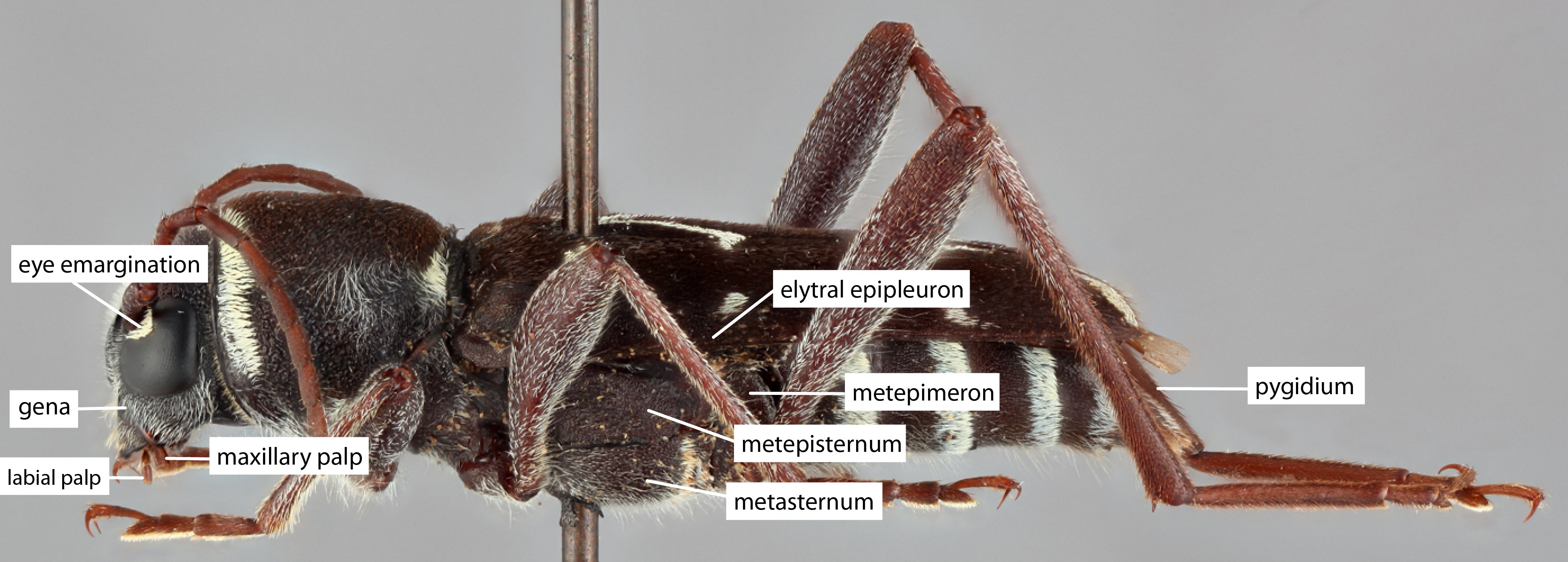 > half width, eye ommatidial density coarse.
> half width, eye ommatidial density coarse.
Antennaeantenna:
in larval and adult insects, paired segmented appendages, borne one on each side of the head, functioning as sense organs and bearing a large number of sensilla
: antennal length reaches between basebase:
the part of any appendage or structure that is nearest the body
and end of elytraelytron:
the leathery forewing of beetles, serving as a covering for the hind wings, commonly meeting opposite elytron in a straight line down the middle of the dorsum in repose
or reaching/surpassing end of body, antennal flagellar segments elongateelongate:
much longer than wide
, scapescape:
the first proximal segment of the antenna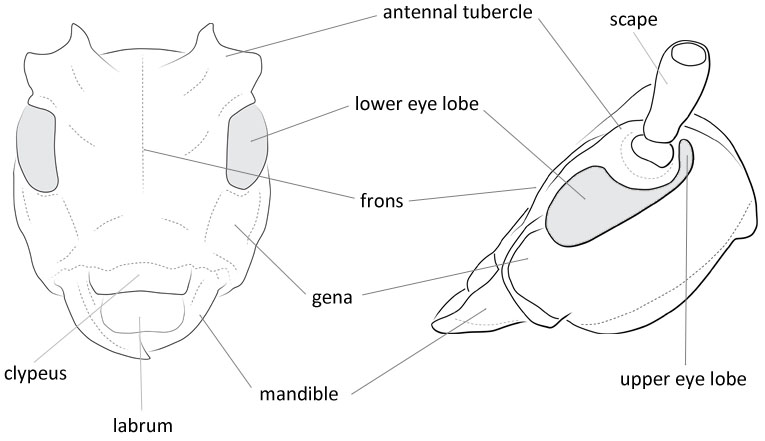 smooth/punctate at apexapex:
smooth/punctate at apexapex:
end of any structure distad to the base
, antennal scapescape:
the first proximal segment of the antenna ≥ segment 3.
≥ segment 3.
Pronotumpronotum:
the upper and dorsal part of the prothorax
: pronotumpronotum:
the upper and dorsal part of the prothorax
shape transversetransverse:
broader than long
, subquadratesubquadrate:
not quite a square
, rarely longer than wide, pronotumpronotum:
the upper and dorsal part of the prothorax
lateral armature absent.
Prosternum: prosternal processprosternal process:
a posterior extension of the prosternum between the coxae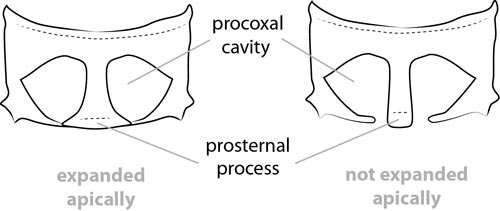 dilated at apexapex:
dilated at apexapex:
end of any structure distad to the base
, rarely not dilated at apexapex:
end of any structure distad to the base
, procoxal cavities open posteriorly.
Elytraelytron:
the leathery forewing of beetles, serving as a covering for the hind wings, commonly meeting opposite elytron in a straight line down the middle of the dorsum in repose
: elytral length reaching or close to end of abdomen, elytral apicesapex:
end of any structure distad to the base
rounded or truncatetruncate:
cut off squarely at the tip
, emarginateemarginate:
notched at the margin , rarely with tooth or spinespine:
, rarely with tooth or spinespine:
a protuberance with an acute (sharp) distal end
, elytral color black, brown, reddish or orange, elytral color pattern present or absent.
Legs: visible tarsomerestarsomere:
subdivision or article of the tarsus, usually numbering from two to five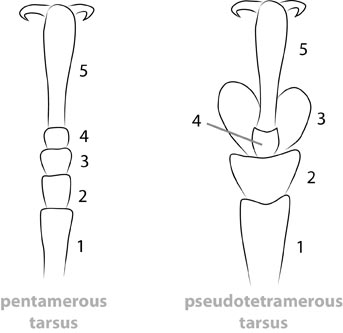 : 4, femora slender, protibial spursprotibial spur:
: 4, femora slender, protibial spursprotibial spur:
sclerotized spine(s) located at the distal tibia; can be single, double, or absent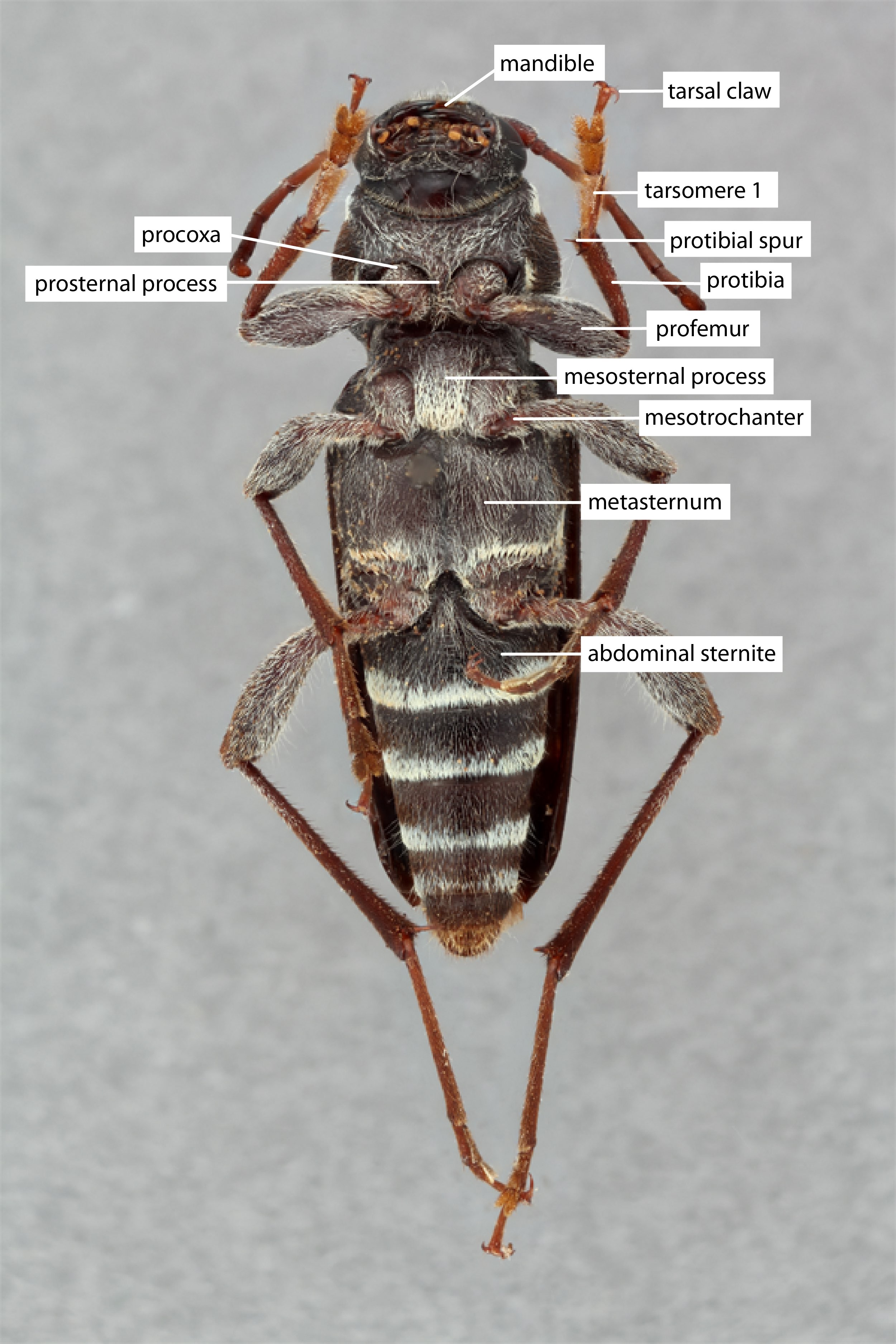 : 2, tarsal clawstarsal claw:
: 2, tarsal clawstarsal claw:
usually paired claws of the pretarsus, at the distal end of the leg simple.
simple.
Centrocerum, Elaphidion
Anelaphus is distinguished from closely related genera by the pubescentpubescent:
downy; clothed with soft, short, fine, loosely set hair
patches on the antennal tubercles, lack of antennal carinaecarina:
an elevated ridge or keel, not necessarily high or acute
, antennal spines on at least antennomereantennomere:
a subunit of the antenna, including the scape, pedicel, and flagellomeres
3, and the elytraelytron:
the leathery forewing of beetles, serving as a covering for the hind wings, commonly meeting opposite elytron in a straight line down the middle of the dorsum in repose
being rounded apicolaterally.
Neotropical, Nearctic
broadleaf trees
74 species. 22 species known from the USA and Canada (Lingafelter 2020Lingafelter 2020:
Lingafelter SW. 2020. Review of species of Anelaphus Linsley and its new synonym Gymnopsyra Linsley from the United States and Canada with description of a new species, synonymies, distributional notes and an illustrated identification key (Coleoptera: Cerambycidae: Elaphidiin. Insecta Mundi 798: 1–30.)
Gymnopsyra Linsley, 1937
Peranoplium Linsley, 1957
Elaphidionoides Linsley, 1957
Anelaphus Linsley, 1936